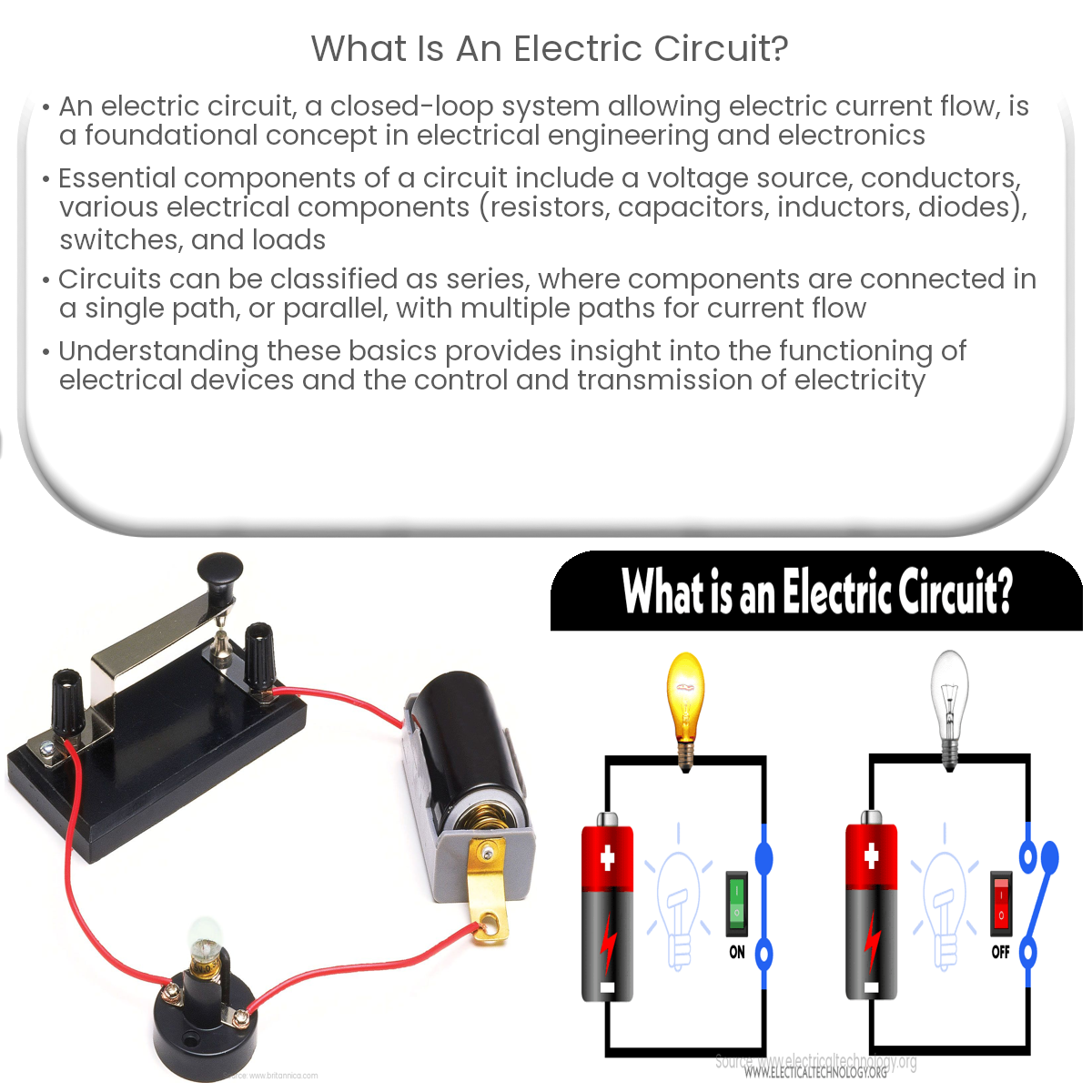An electric circuit is a closed-loop pathway allowing electric current to flow through interconnected components, powered by a voltage source.
Understanding Electric Circuits
An electric circuit is a fundamental concept in the field of electrical engineering and electronics. It forms the basis for understanding how electrical devices function and how electricity is transmitted and controlled. This article aims to provide a basic understanding of what an electric circuit is and its essential components.
Definition of an Electric Circuit
An electric circuit is a closed-loop or continuous pathway that allows electric current to flow from a voltage source, through various electrical components, and back to the source. The uninterrupted flow of electric charge creates a complete circuit, enabling the components within the circuit to perform their intended functions.
Essential Components of an Electric Circuit
There are several fundamental components that make up an electric circuit:
- Voltage Source: The voltage source, such as a battery or a power supply, provides the electrical energy required for the circuit to function. It creates an electric potential difference across the circuit, which drives the flow of electric current.
- Conductors: Conductors, typically made of materials with low electrical resistance like copper, provide the pathway for electric current to flow through the circuit.
- Electrical Components: Various electrical components, such as resistors, capacitors, inductors, and diodes, are connected within the circuit to perform specific tasks or modify the behavior of the circuit.
- Switches: Switches are used to control the flow of electric current within the circuit, allowing it to be turned on or off as needed.
- Loads: A load is a device or component that consumes electrical energy within the circuit, converting it into another form of energy, such as light, heat, or motion.
Types of Electric Circuits
Electric circuits can be classified into two main types:
- Series Circuits: In a series circuit, components are connected end-to-end in a single path, so the current flows through each component in turn. If one component fails, the entire circuit stops working.
- Parallel Circuits: In a parallel circuit, components are connected in multiple paths, allowing the current to flow through more than one path simultaneously. If one component fails, the other paths can still function.
Conclusion
An electric circuit is a closed-loop system that enables the flow of electric current through a series of interconnected components. By understanding the basic concepts and components of an electric circuit, we can gain insight into how electrical devices function and how electricity is controlled and transmitted. The study of electric circuits is crucial for those interested in electrical engineering, electronics, and related fields.


